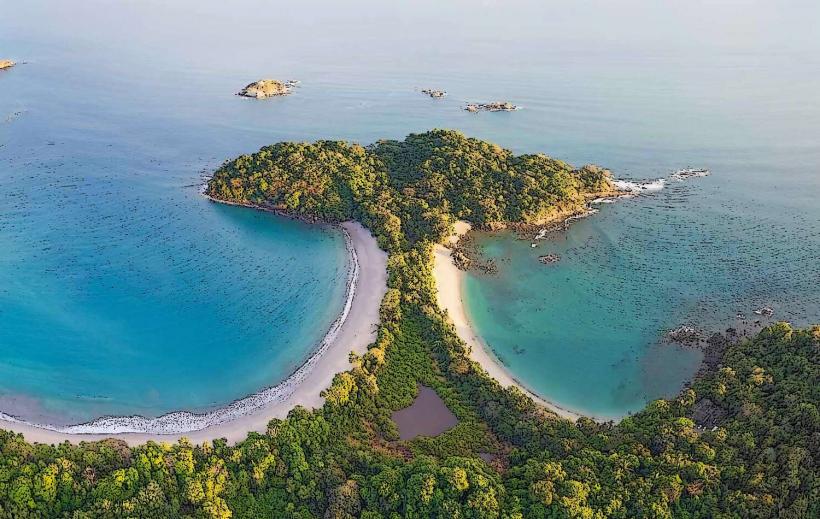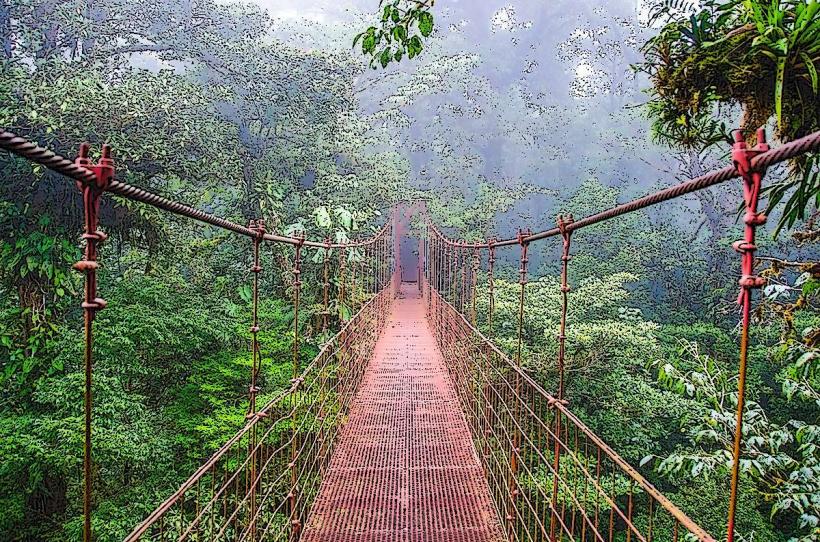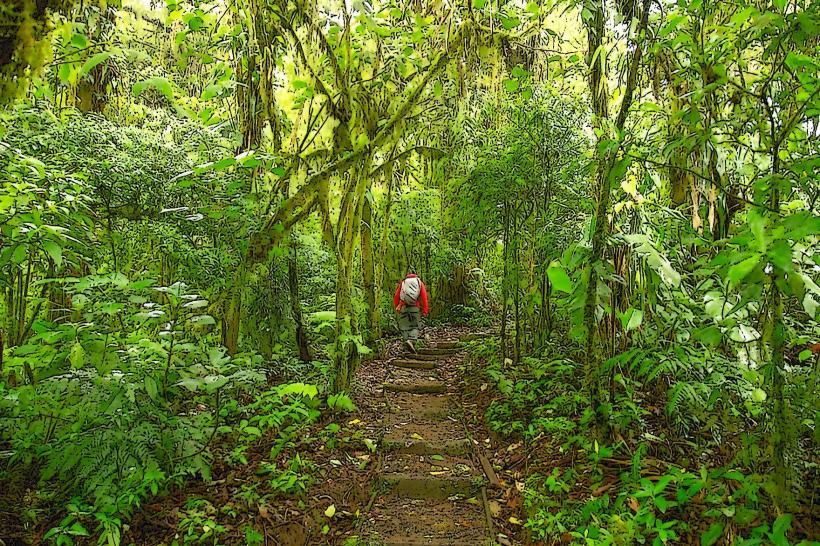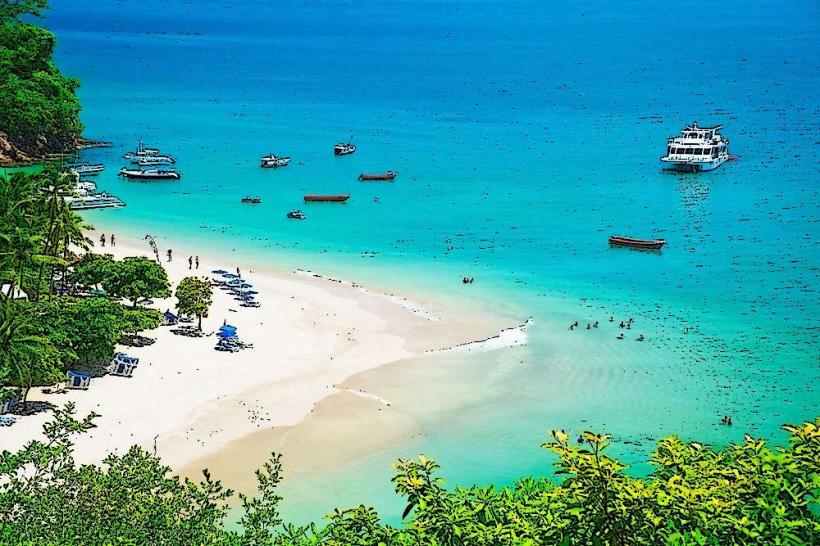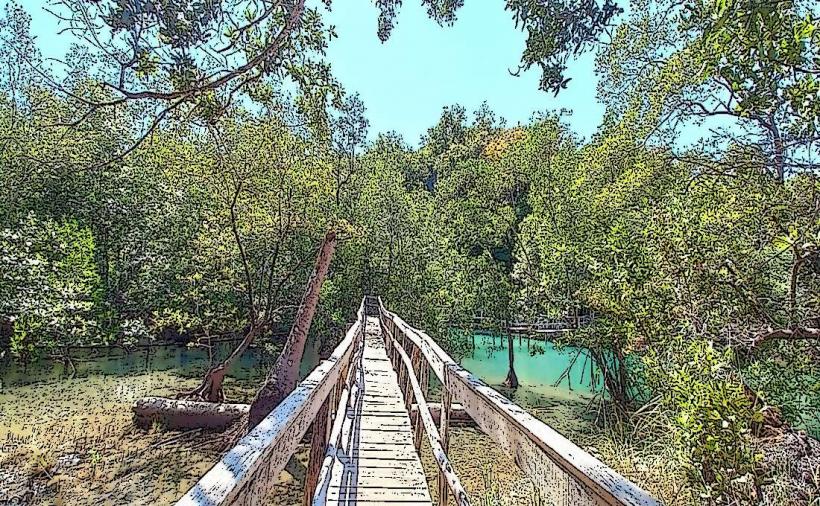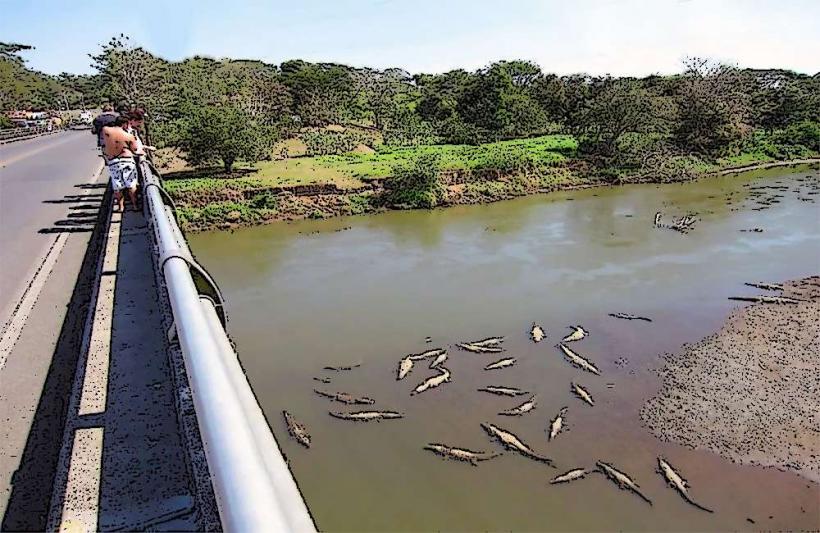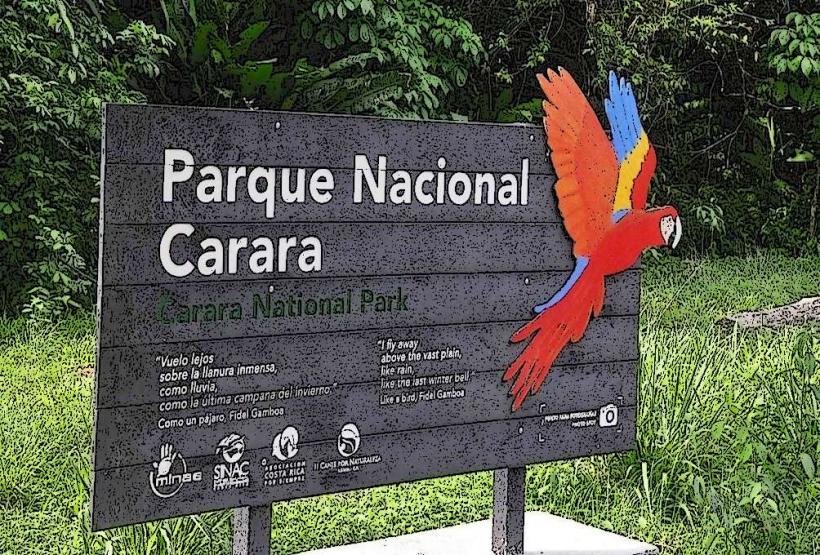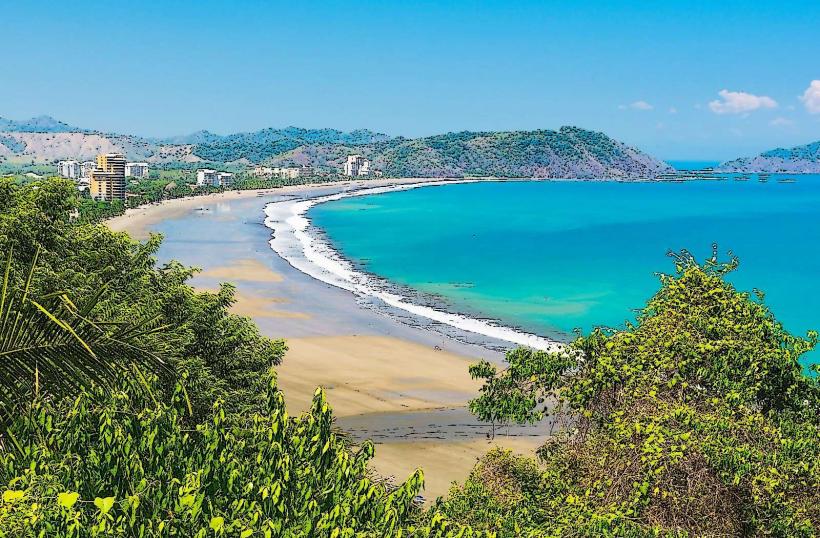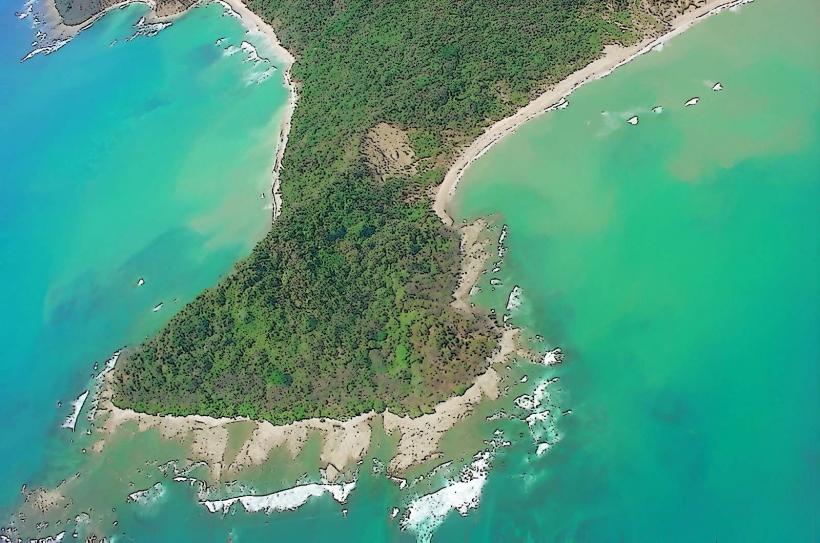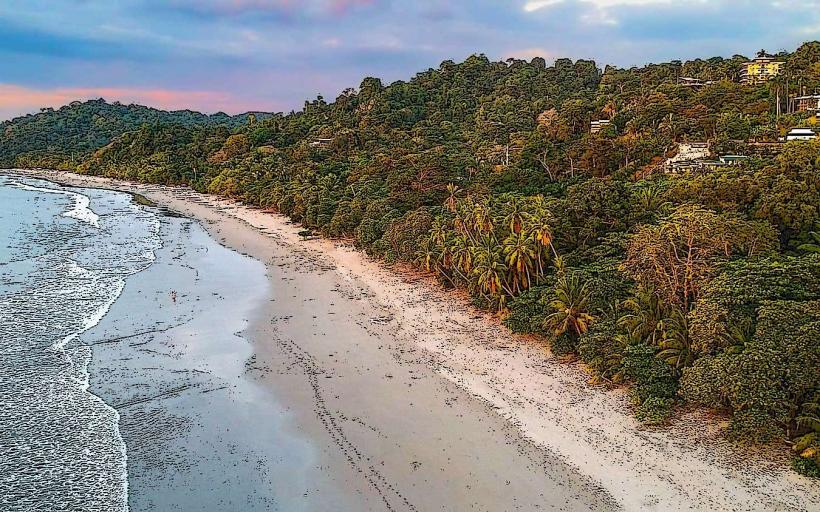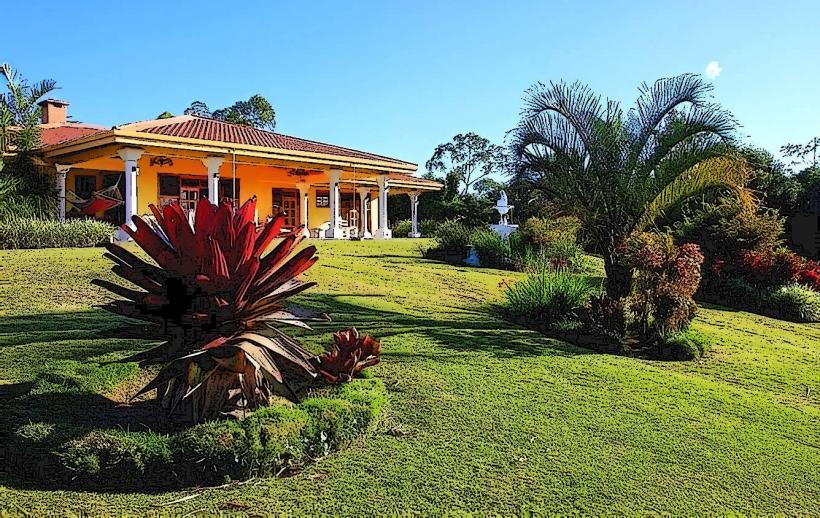Information
Landmark: Cano Island Biological ReserveCity: Puntarenas
Country: Costa Rica
Continent: North America
Cano Island Biological Reserve (Reserva Biológica Isla del Caño) is a protected area off the coast of Costa Rica, located in the Pacific Ocean, near the Osa Peninsula in Puntarenas Province. It is part of Corcovado National Park's broader conservation efforts, and it is known for its rich marine biodiversity, making it a top destination for diving, snorkeling, and eco-tourism.
Geography and Location
- Location: Cano Island is situated about 16 kilometers (10 miles) off the coast of Bahía Drake on the Osa Peninsula in southern Costa Rica. The island lies in the Pacific Ocean and is part of the Corcovado National Park region, although it has its own designation as a biological reserve.
- Coordinates: 8.771° N latitude, 83.635° W longitude.
- Access: The island is accessible by boat from Sierpe (about a 1.5-hour boat ride) or Drake Bay (approximately 30-40 minutes by boat). The nearest airport is Drake Bay, which is about 15-20 minutes by boat from the reserve.
History and Protection
- Establishment: Cano Island was designated as a biological reserve in 1978 to protect its rich marine life, tropical forests, and biodiversity. The reserve is managed by the Costa Rican National System of Conservation Areas (SINAC).
- Importance: The island is crucial for the preservation of marine ecosystems and coral reefs, and it provides a sanctuary for numerous endangered species, both on land and in the surrounding waters.
Ecological Significance
- Marine Biodiversity: Cano Island is considered one of the top diving spots in Costa Rica due to its abundant marine life. The waters surrounding the island are home to coral reefs, underwater caves, and rock formations, which provide critical habitats for a variety of marine species.
- Species: The island is an important sanctuary for species such as the Pacific sea turtle, whale sharks, mantas, and various species of dolphins, tuna, snapper, and snappers. The waters around Cano Island are also frequented by humpback whales during their migratory periods.
Wildlife on the Island
Marine Life: Cano Island’s waters are famous for their coral reefs, which host a variety of tropical fish, including surgeonfish, parrotfish, angelfish, and moray eels. Snorkelers and divers can observe the vibrant underwater life around the island's reefs and rocky formations.
- Whale Sharks: During the months of December to March, whale sharks can be spotted near the island, making it an exceptional location for scuba diving enthusiasts.
- Sea Turtles: The reserve also provides a safe habitat for marine turtles, including the endangered olive ridley and green turtles, which nest along the island's shores.
Land Wildlife: The island itself is largely covered in tropical forest, and while it is relatively small (about 3.5 square kilometers or 1.4 square miles), it offers sanctuary for howler monkeys, capuchin monkeys, iguanas, agoutis, and various bird species. Birdwatchers may spot species such as the scarlet macaw, toucans, and parrots on the island.
Activities and Attractions
Scuba Diving and Snorkeling:
- Cano Island is a premier destination for scuba diving and snorkeling due to the clarity of the water and the extensive coral reefs surrounding the island. Visitors can explore the underwater world, where tropical fish, moray eels, whale sharks, and other marine life abound.
- Diving Sites: Popular diving spots around the island include Isla del Caño Reef, Pargo Point, and Cave Point, where visitors can swim alongside giant manta rays, schools of fish, and marine turtles. The underwater biodiversity makes the island a popular destination for diving enthusiasts, especially during the dry season.
Hiking and Nature Walks:
- While the island’s landmass is relatively small, visitors can enjoy guided hikes and walks through the lush tropical forest, which provides opportunities to observe local flora and fauna.
- Hiking tours often focus on birdwatching and wildlife spotting, with the chance to see species like howler monkeys, white-faced capuchin monkeys, and a variety of bird species. There are several trails that take visitors through different habitats of the island.
Camping and Eco-Tourism:
- For visitors who want a more immersive experience, camping on the island is an option. However, it is regulated to maintain the integrity of the ecosystem, and there are designated camping areas with basic facilities. Eco-tourism activities such as guided tours and nature walks are available, and some tours combine snorkeling or diving with ecological education.
Whale Watching:
- From July to October, humpback whales migrate through the waters around Cano Island. Whale-watching tours can be arranged from Drake Bay or Sierpe, offering the opportunity to see these magnificent creatures up close as they pass through the region.
Conservation and Sustainability
- Protection Efforts: Cano Island is part of Costa Rica’s commitment to biodiversity conservation and sustainable ecotourism. The area is protected under strict regulations that limit human impact and ensure that tourism activities are eco-friendly. Only a limited number of visitors are allowed on the island each day, helping to preserve its fragile ecosystems.
- Marine Research: The reserve also serves as a key area for marine research, particularly regarding the study of marine conservation and the impacts of human activity on marine ecosystems. Local authorities and research organizations monitor the health of coral reefs and marine life to ensure that they remain sustainable for future generations.
Best Time to Visit
- Dry Season (December to April): The best time to visit Cano Island is during Costa Rica's dry season (December to April). During this time, the weather is ideal for snorkeling, diving, and nature walks, with clear waters and abundant wildlife.
- Wet Season (May to November): The wet season (May to November) can still be a good time for visiting, especially for whale watching. However, the weather can be unpredictable, with frequent rain showers, so it's important to prepare accordingly. Water visibility may also be lower during the rainy season.
Visitor Information
- Access: Visitors typically reach Cano Island by boat from Sierpe or Drake Bay. Both destinations are accessible by car from San José (about 5-6 hours by road).
- Regulations: Visitors to the island are required to have a guide and follow the rules set by the Costa Rican government and the reserve's management, which include no fishing and no collecting of shells or marine life.
- Accommodation: While there is no accommodation on the island itself, visitors can stay in nearby Drake Bay or Sierpe, where a range of eco-lodges, hotels, and hostels are available. Many lodges in these areas offer tours to Cano Island, providing transport and guides for a complete experience.
Conclusion
Cano Island Biological Reserve is a treasure trove of marine biodiversity and an essential part of Costa Rica’s natural heritage. With its pristine beaches, vibrant coral reefs, and abundant wildlife, it is a must-visit destination for eco-tourists, divers, and nature lovers. The island’s protection as a biological reserve ensures that it remains a haven for marine life and tropical forest ecosystems, while also offering visitors a chance to explore one of the most beautiful and ecologically significant areas in Costa Rica. Whether you’re interested in diving, wildlife watching, or simply relaxing in a beautiful natural setting, Cano Island offers a unique and unforgettable experience.

